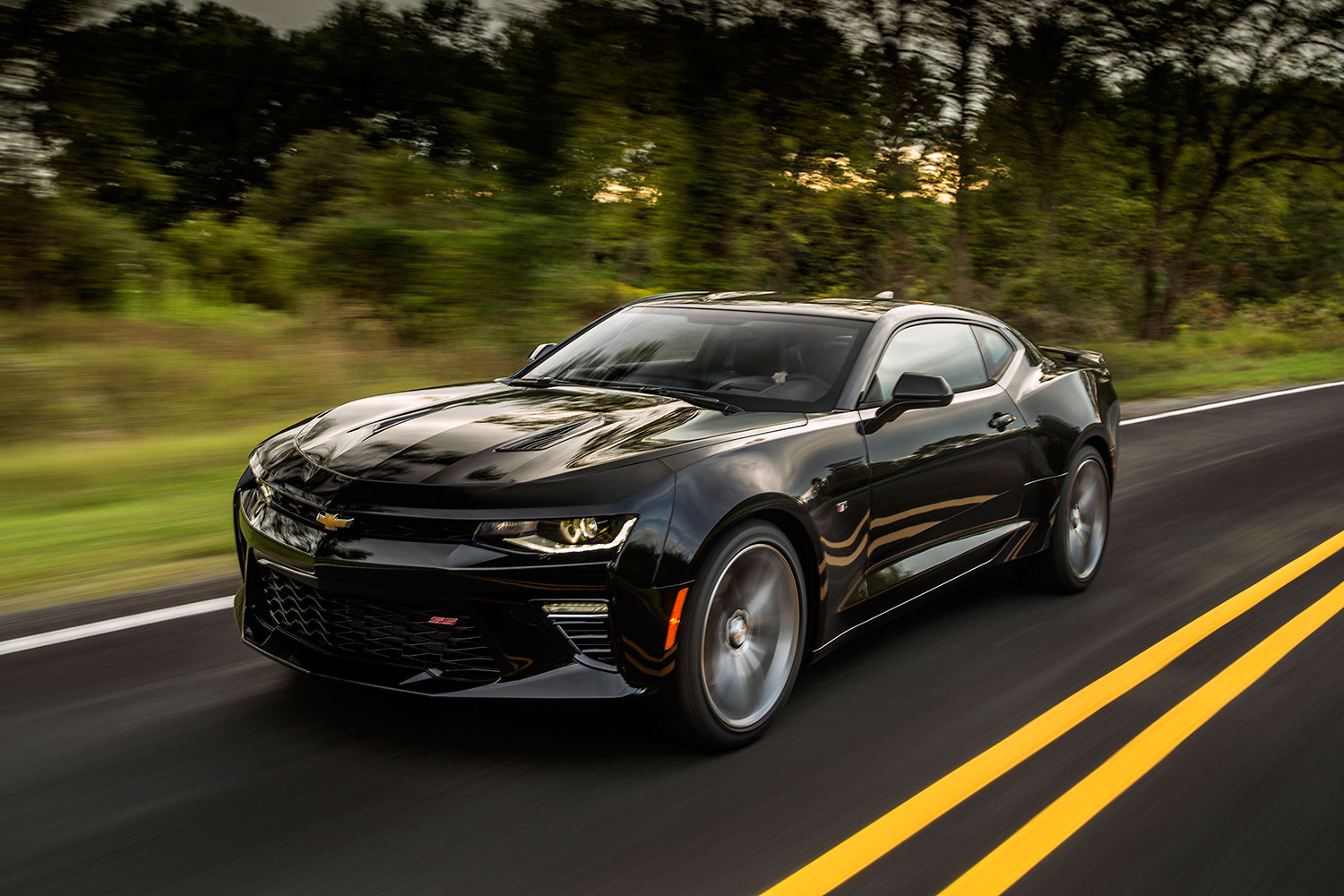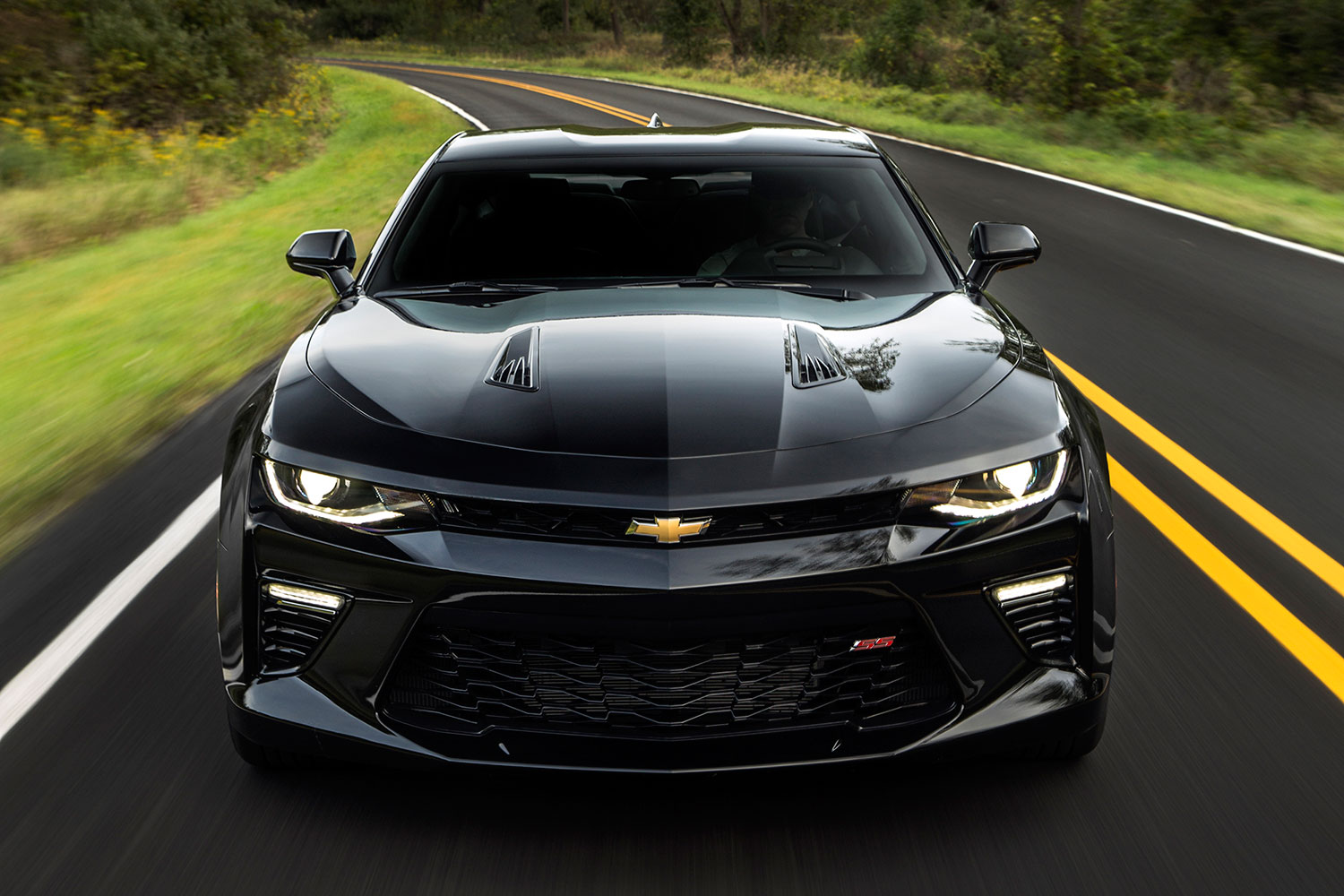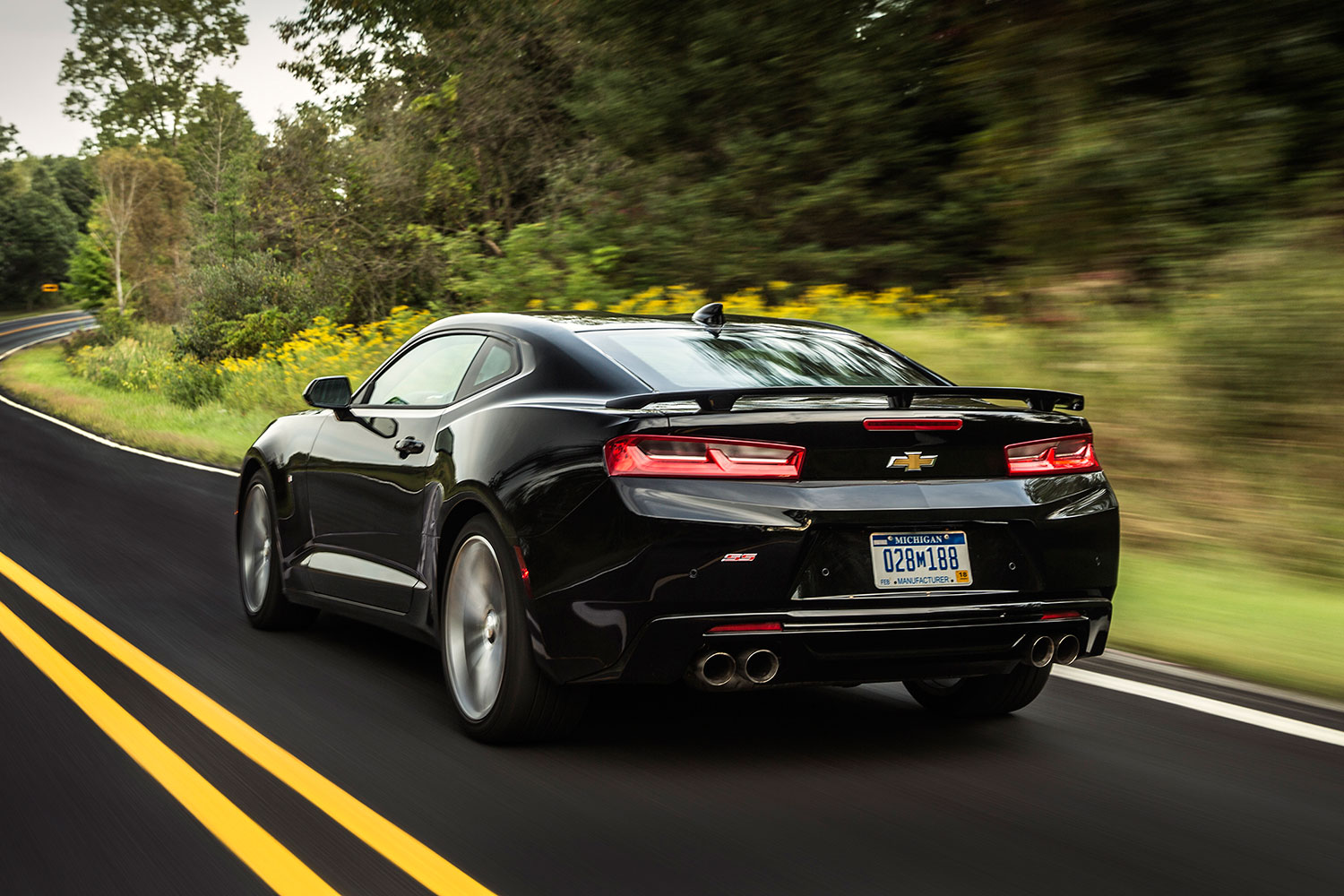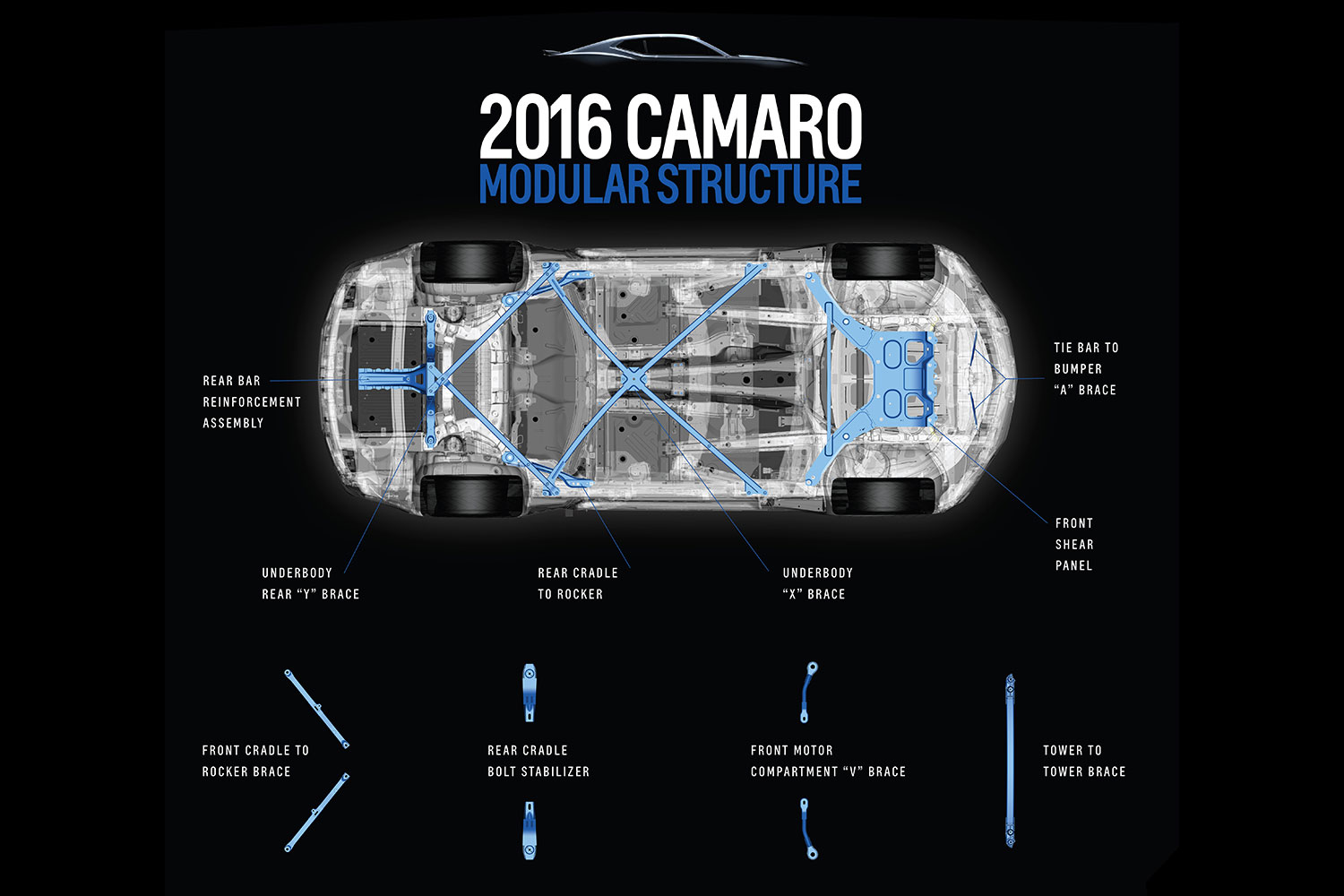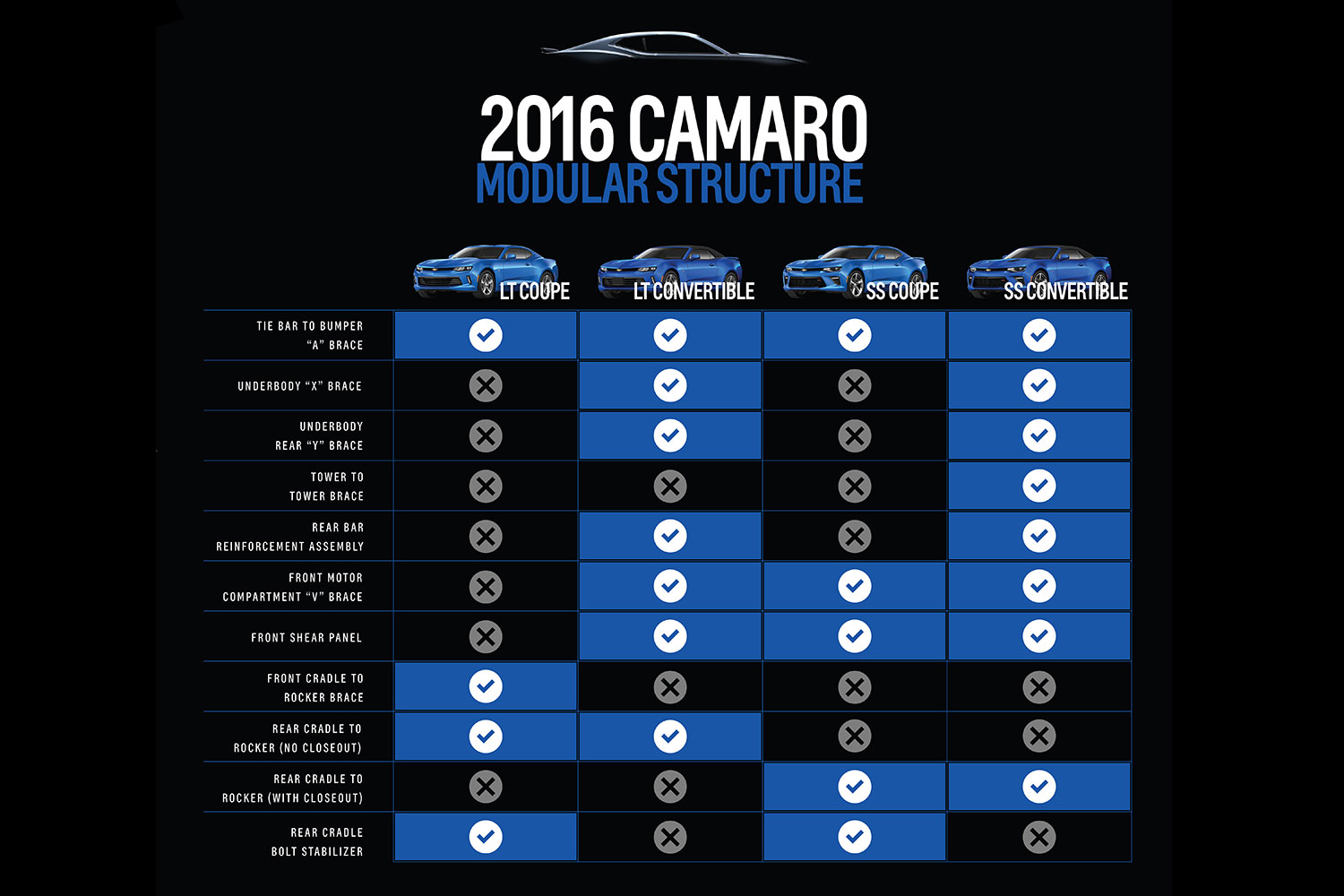For 2016, the Chevrolet Camaro enters its sixth generation with a lighter, smaller, platform and its first four-cylinder in decades. That’s led to plenty of speculation on what effect these changes and updates will have on performance.
There’s no need to speculate any more, because Chevy is disclosing performance figures for the Camaro, and they look pretty impressive. When equipped with the eight-speed automatic transmission, the 455-horsepower, 6.2-liter V8 Camaro SS will do zero to 60 mph in 4.0 seconds, run the quarter mile in 12.3 seconds at 116 mph, and even achieve 0.97 g of lateral grip.
Those represent the best official performance figures for the 2016 Camaro so far, but other configurations don’t let the side down either. SS models with the six-speed manual transmission will do zero to 60 mph in 4.3 seconds and run a 12.5-second quarter mile at 115 mph. The smaller engines do pretty well, too.
The 335-horsepower 3.6-liter V6 will shuffle the Camaro to 60 mph in 5.1 seconds with the automatic transmission, and 5.2 seconds with the manual. Quarter-mile times are 13.5 seconds at 103 mph with the automatic, and 13.7 seconds at 102 mph with the manual. The V6 Camaro will also pull up to 0.89 g in the corners.
Finally, Chevy says the 2.0-liter turbocharged four-cylinder engine will be good for zero-to-60 times of 5.4 seconds with the manual transmission and 5.5 seconds with the automatic. With the 275-horsepower engine, the Camaro will run the quarter mile in 14 seconds flat with either transmission, although the manual has a 1 mph trap-speed advantage over the automatic, at 100 mph. Four-cylinder models also boast 0.85 g of lateral grip.
That means the four-cylinder is the only 2016 Camaro powertrain that is quicker with the manual transmission than the automatic. Unlike with Ford’s Mustang, Chevy is positioning its turbo four as the base engine, although the Bowtie brigade is quick to note that the four matches the output of the 5.7-liter V8 in a 1995 Camaro Z28, and claims performance figures are close too.
A likely boost to performance is the 2016 Camaro’s lighter platform. The base curb weight is 368 pounds lighter than the previous generation, Chevy says, while the 1SS model weighs 223 pounds less than its fifth-generation predecessor. Since it also has 29 more horsepower, Chevy also claims a 14 percent improvement in power-to-weight ratio.
The 2016 Chevrolet Camaro goes on sale this fall.

